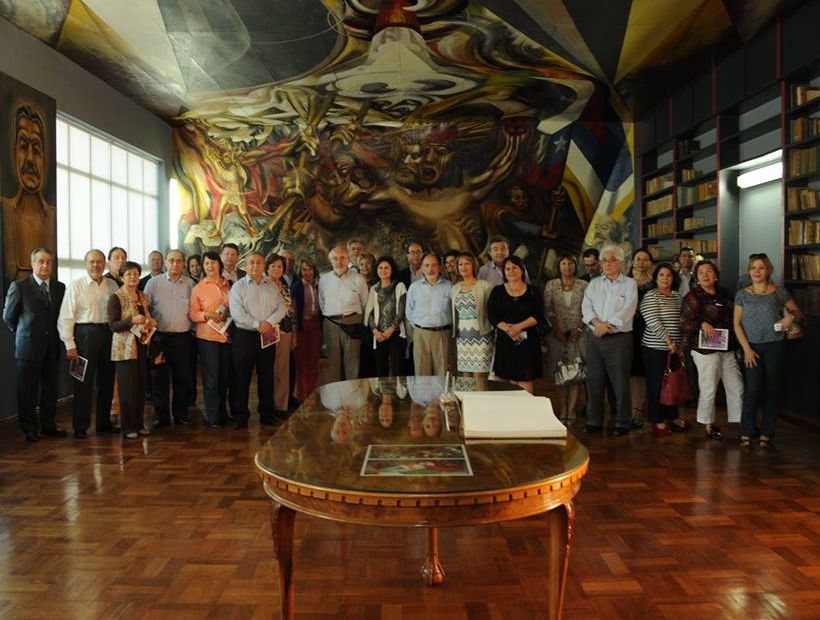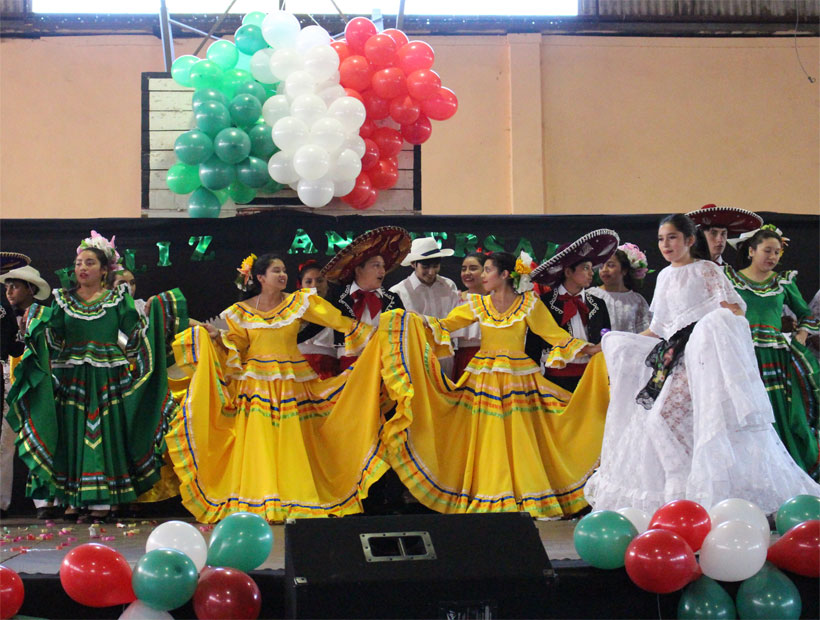Mexico's influence in Philippine cuisine.
Filipinos of today are familiar with themed restaurants that serve taco, burrito, enchilada, quesadilla, nachos, and chicken chimichanga as regular fare. Tequila, an alcoholic drink from a plant called blue agave growing in the Mexican desert, has also become popular among drinkers of late, as well as Corona beer, to a certain extent. These are all clearly Mexican influences in Filipino dining habits, particularly those living in urban centers. But many of us may not realize that our relationship with Mexicans goes as far back as the colonial period. The lack of awareness is obviously caused by the fact that the Mexican presence was masked or overwhelmed by Spanish hegemony. But the truth is that the Mexicans have long been with us, and certainly have long been present in our kitchen.
In the article, “When Mexico ruled the Philippines” (Perry Diaz, Global Balita, October 1, 2004), it is recalled that Mexico was part of the Spanish empire, along with what would eventually become the Central American nations and the American Southwest . They were then collectively called Nueva España or New Spain. “For 250 years - from 1565 to 1815 - Philippines was ruled by the Viceroy of Nueva España for the Spanish crown. Those who succeeded Legazpi as governor-general were all Mexicans until 1815 when Spain took direct control of the Philippines. "
For 250 years, Mexico practically ruled the Philippines, with all governor-generals, except Legazpi, being Mexican-born [and most likely of Spanish mestizo descent], together with “most of the soldiers, colonists, missionaries, and traders [with some maybe of Indian, Aztec, etc. descent] ”who had been“ promised land and wealth ”in exchange for Philippine migration. Thanks to the Manila-Acapulco route of the ensuing galleon trade, a great cultural exchange started, which is hailed by historians today as the first recorded incidence of full-on globalization.
Filipino pop historian Ambeth Ocampo ("Mexico under our skin," September 23, 2009, Philippine Daily Inquirer), specified which products that reached us through that route were Mexican, and a lot of culinary terms emerged - 26, to be exact. Ocampo notes how a number of them end in -te: peanut, sweet potato, chayote, achuete, sapote, tomato. (Might we as well include pazotes?)
It appears that our contact with Mexico enriched our choices in fruits and vegetables by leaps and bounds. Where would pinakbet and bulanglang be without tomatoes and squash, for example? Based on the list, a number of the ingredients listed in the popular folk song "Bahay Kubo" would have to be Mexican, or at least South American, in origin. It is reported elsewhere that the only bean native to the Philippines is the monggo, so the other beans mentioned in the song - at least lima bean (patani) and jicama (singkamas) - are most likely South American or some other provenance. It is equally likely that other common beans not mentioned, namely chickpeas, black beans, white beans and kidney beans, came here through the galleon trade.
There are other surprises: Papaya and pineapple, which we intimately associate with Filipino life - in fact, earning a mention in riddles and folk songs ("Leron, Leron Sinta") and tales ("Alamat ng Pinya"), are in fact fruits not originally from here but from there. So is the ubiquitous corn. So are the less popular ones, like the astringent but sweet fruit, camachile, whose name we have appropriated as well for a crumbly cookie shaped like this fruit. So close has been our identification with these fruits that we have this funny notion today that there are "native" guava, papaya, pineapple, tomato, etc. varieties.
Ocampo's list, though long, is incomplete. Chesa, for instance, the red-orange fruit often disliked for its sickeningly sweet taste with bitter, gummy aftertaste and starchy consistency, is missing. It turns out to be a Mexican import as well, according to my own research. So is cacao for cocoa, as well as chili and tapioca, among other things. I speculate that even the term lubias shares the same place of birth.
My separate research on Philippine dishes further yielded the following finds, which are undoubtedly Mexican in origin, judging from the name alone: Vigan, Ilocos Sur's and Cavite's chicken pipian, which uses pazotes (or epazotes) leaves; some regions' version of mole; often; champorado; Sta. Rosa, Laguna's atole; and tamales.
An American feature article, “Mexico's popular tianguis,” (Rachel Laudan, Zester Daily, August 6, 2010) mentions that tamarind juice is a popular drink among Mexicans even up to this day. This observation reminded me about an old Gilda Cordero-Fernando article saying that tamarind juice used to be commonplace in the Philippines, so I hereby speculate another connection. It is a wonder, however, why many of the Mexican staples mentioned in the feature, such as cold milk-egg-and-fruit drinks, cinnamon sticks, cherimoya fruits, etc. remain exotic to us Filipinos. Similarly, we accepted the guava but we never took to, or did not retain, the tradition of making guava candy rolls called roll of guava and membrillo, though we still make guava jams. We accepted the avocado but we never adopted guacamole sauce, only mashed avocado and iced candy in avocado flavor for snacks. It could be that our ancestors found these Mexican fare too foreign to their taste at the time. Nevertheless, the Mexican contribution to Philippine cuisine, not to mention the rest of Asian cuisine (with these isles serving as entrepot or conduit), is incalculable.
Mexican culture continues to influence us Filipinos through the entry of present-day Mexican dishes and ingredients, thanks, as mentioned, to the establishment of Tex-Mex and Mexican restaurants in the malls and urban centers and the burgeoning global 'foodie' culture. And all these, of course, are inescapably subject once again to our penchant for tweaking what is unfamiliar but appetizing, according to our own quaint preferences.
Compiling all the above-mentioned terms, we are able to come up here with this glossary of Mexican influences in Filipino cuisine:
achuete (Mexican Spanish achiote, from Nahuatl achiotl) - atsuete
alubias - a term used to refer to common beans in Mexico; lubias is used by Pangasinenses and Ilocanos to refer to Baguio beans, which is also called bichuelas or habichuelas (a Spanish term for kidney beans) in other parts of the Philippines
anonas - anonas
atis
atole - a thick cornmeal drink in Mexico, this is also used to refer to maja blanca in Laguna
avocado - abukado azucena
- this is a name of a flower, but it is also used to refer to a popular dog meat dish
balimbin - balimbing
cacahuate - kakawate, madre kakaw, but it means peanut in the Mexican language; cacahuate flowers are eaten in Ilocandia
cacao - cocoa
caimito - kaimito (which we have Anglicized to "star apple," as though to say that, if there's no English translation for something, it doesn't exist)
pumpkin - kalabasa (squash); this includes eating squash flowers
camachile (from the Aztec cuanhmochitl) - kamatsili
camote (from the Aztec camotl) - camote, kamote (sweet potato)
casui - kasuy, balubad (cashew)
cherry - aratilis, saresa
champorado - may be a Filipino adaptation of the Mexican champurrado, which is a drink made of maize flour and chocolate
chayote - sayote
chesa - red-orange fruit often disliked for its sickeningly sweet taste with bitter, gummy aftertaste and starchy consistency, is missing, which turns out to be a Mexican import as well.
chico (from the Aztec xicotzaptl) - chico
chili - (from chilli, chile) - sili (chili pepper)
chocolate (from the Aztec zocatl) - tsokolate
pluela - sinigwelas
guayabano - guyabano (soursop)
guyaba - bayabas
hicamas - singkamas (jicama, turnip)
maiz - mais (corn)
menudo - a traditional Mexican beef tripe soup with chili sauce and spices; the Filipino version is quite different: a diced pork and liver stew in tomato sauce with vegetables
mole - a Mexican sauce made of tomatoes as base, added with chocolate, peppers, nuts, etc .; there is such a Filipino dish called this, which looks like a local, watered-down adaptation of the Mexican chicken mole (chicken cooked in mole sauce)
palenque (Nahuatl) - palengke (market)
papaya - papaya (pawpaw )tillas
wrappers - I speculate that even the intricate cutout design of some Tagalog-region pills wrappers may have originated from the old Mexican craft called papel picado
pazotes leaves - the Mexican herb , epazotes (Dysphania ambrosioides); the leaves are used to flavor pipian in Ilocos and Cavite as well as lechon Cebu
pepper - paminta (pepper)
pineapple, pinya - pineapple; it is quite a shocker to learn, personally, that pineapple is not a native Filipino fruit
pipian, chicken pipian - in Vigan, Ilocos Sur, and in Cavite, a dish that uses pazotes leaves
sunflower seeds - indirectly through the introduction of the sunflower
tamales - a ground rice flour (in place of the original cornmeal) and meat snack wrapped in banana leaves (in place of corn husks)
tamarind juice -?
tapioca - kamoteng kahoy (cassava)
tomato - kamatis (tomato)
vanilla - yes, originally from Mexico too
zapote (Nahuatl) - zapote, a fruit related to chico or sapodilla
Note: Ambeth Ocampo made updates here: "Atsuete, kamote, zapote, "January 10, 2012; "History in language," September 12, 2014, Philippine Daily Inquirer.
http: //glossaryoffilipinofood.blogsp...e-cuisine.html

![]()









